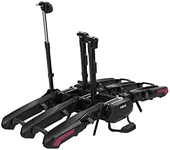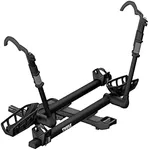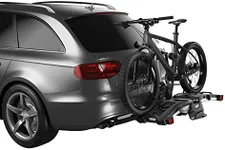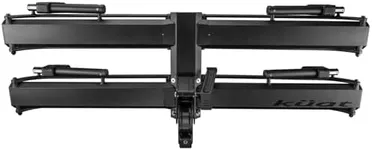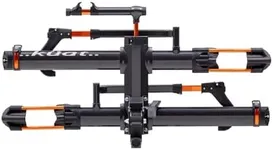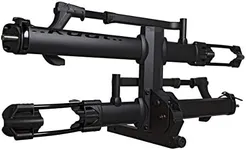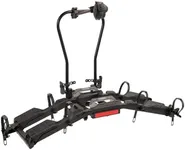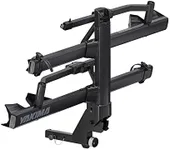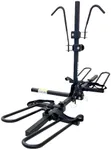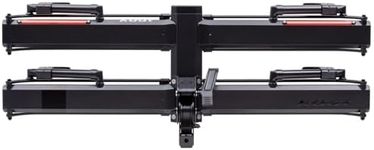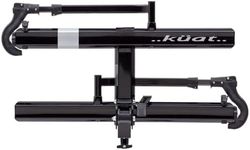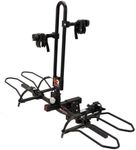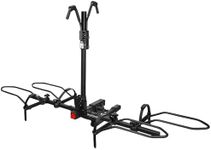Buying Guide for the Best Hitch Bike Racks
Choosing the right hitch bike rack can make transporting your bikes safer, easier, and more convenient. The best rack for you depends on your vehicle, the number and type of bikes you have, and how often you plan to use it. Understanding the key features and specifications will help you find a rack that fits your needs and keeps your bikes secure during travel.Hitch Receiver SizeThe hitch receiver size refers to the opening on your vehicle where the rack attaches, usually measured in inches (commonly 1.25" or 2"). This is important because your rack must match your vehicle’s hitch size to fit securely. Smaller 1.25" receivers are often found on cars and smaller SUVs, while 2" receivers are common on trucks and larger SUVs. Check your vehicle’s hitch size before shopping, and choose a rack that matches. If you have a smaller vehicle, a 1.25" rack is likely your best fit, while larger vehicles can handle the heavier-duty 2" racks.
Bike CapacityBike capacity tells you how many bikes the rack can carry at once. Racks typically hold between 2 and 5 bikes. This is important because overloading a rack can be unsafe and may damage your bikes or vehicle. If you usually ride solo or with one other person, a 2-bike rack is sufficient. For families or group rides, consider a rack that holds 4 or more bikes. Always plan for your regular needs, but if you occasionally need to carry more bikes, look for racks with add-on options.
Rack Type (Platform vs. Hanging)There are two main types of hitch bike racks: platform and hanging. Platform racks support bikes by their wheels, making them stable and easy to load, especially for heavier or oddly shaped bikes. Hanging racks suspend bikes by their frames, which can be lighter and less expensive but may not fit all bike styles. If you have heavy, expensive, or non-standard bikes (like e-bikes or kids’ bikes), a platform rack is usually better. For standard adult bikes and lighter use, a hanging rack can be a good choice.
Bike Attachment MethodThis refers to how the rack holds your bikes in place, such as by the frame, wheels, or both. Secure attachment is important to prevent bikes from moving or getting damaged during transport. Frame clamps are common but may not work well with carbon frames or unusual shapes, while wheel clamps are gentler and more versatile. If you have delicate or uniquely shaped bikes, look for racks that secure bikes by the wheels. For standard bikes, frame or wheel attachment both work well.
Tilting and Folding FeaturesSome racks can tilt away from your vehicle to allow access to the trunk or fold up when not in use. This is important for convenience, especially if you need to get into your trunk often or want to leave the rack on your vehicle. If you use your trunk frequently or want to minimize the space the rack takes up when not carrying bikes, look for racks with tilting and folding features.
Weight CapacityWeight capacity is the maximum total weight the rack can safely carry, usually listed per bike and for the whole rack. This is crucial if you have heavy bikes, such as e-bikes or mountain bikes. If your bikes are on the heavier side, make sure the rack’s weight limit is high enough for your needs. For lighter road or kids’ bikes, most racks will suffice, but always check the specs to be sure.
Security FeaturesSecurity features include locks for the bikes and the rack itself, helping prevent theft when your vehicle is parked. This is important if you plan to leave your bikes unattended on the rack. If you often park in public places, look for racks with built-in locks or the ability to add your own. For occasional use or low-risk areas, basic security may be enough.
